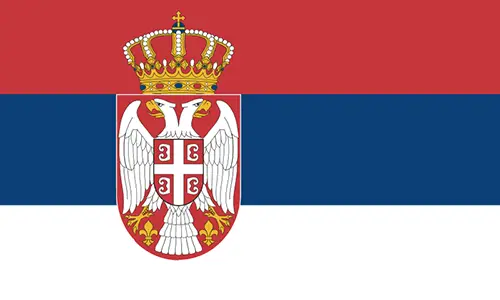After a long history of alliances and wars, uprisings and civil war Serbia was incorporated into the Federation of Yugoslavia in 1946. Six states comprised the federation that was headed by Josip Broz. The Federation was communist, but were boycotted by the Soviet Bloc. Yugoslavia was a founding member of the Non Aligned Movement that sought to provide an independent voice in the era of the Cold War. Josip Broz, the man who kept the Federation united under one flag, was better known by his wartime code name ‘Tito’. Soon after his death in 1980, the Federation was plunged into decades of the bloodiest civil wars of modern times.
Eventually Yugoslavia, ‘the land of the southern Slavs’ was broken up into the modern countries of Serbia, Croatia, Slovenia, Bosnia, Herzegovina, Kosovo, Macedonia and Montenegro. The capital of Yugoslavia, Belgrade, became the capital of Serbia.
FACT 1: The Kingdom of Serbs, Slovaks and Croats was formed in 1918. The name was changed to Yugoslavia in 1929. Yugoslavia resisted the Axis Powers and Josip Broz took full control of the Federation. The states were united and prospered under Tito’s leadership. Slobodan Milosevic rose to power in 1989. He made strident calls for Serb dominance over the other Slavic tribes.
FACT 2: Milosevic’s ultra-national attitude led to the bloody breakup of Yugoslavia on ethnic lines. Milosevic continued through a series of bloody wars to establish Serb dominance. This led to international sanctions, military action by NATO and various other international interventions. All these factors contributed to a collapse of the Serbian economy.
FACT 3: In 2000 Milosevic was ousted and a democratic government installed. However the status of Kosovo was only decided in 2008, when Kosovo declared Independence. Serbia does not recognize Kosovo, though the UN does.
FACT 4: Once peace was restored international aid began to flow into the war torn country. The economy has started to recover and with the European Union providing options for trade the people of Serbia can look forward to an era of peace and prosperity.
FACT 5: Serbia is now looking to revive its tourism industry. The medieval monasteries and frescoes of Serbia once attracted many tourists. In addition there are 50 natural springs that have been developed as tourism destinations.
FACT 6: The country has no official religion as religion was abolished by the Communist government of Tito. Historically the Serbs were converted to Eastern Orthodoxy by missionaries from Constantinople.
FACT 7: The language called Serbian is essentially a Serb Croatian language spoken by the Slav’s of the Balkans. The language of all the Slavic states is the same but differ regionally in vocabulary and pronunciation. The Serbs are distinct in that they use the Cyrillic alphabet. This script was developed in the ninth century especially to accommodate the peculiarities of the Slavic tongue.
FACT 8: Serbia has a rich food heritage. International cuisine is available in the restaurants of the cities. These restaurants make Serbia a leader in cuisine in Eastern Europe. In addition the ethnic cuisine of Serbia is very popular. Cevapcici, a delicacy of grilled, highly spiced, mixed ground meats stuffed cabbage, roast meat with sauerkraut and moussaka are standard Serbian fare.
FACT 9: Music is an integral part of Serbian culture. Today traditional rhythms fuse with electronic rock instruments to produce a genre termed turbofolk. Turbofolk is popular in the clubs of Serbia.
FACT 10: The Serbian author, Ivo Andric won the Nobel Prize for Literature in 1961 on the strength of his book ‘The Bridge on the Drina’.









Leave a Reply